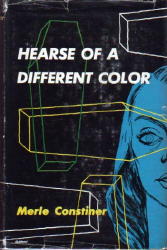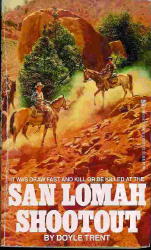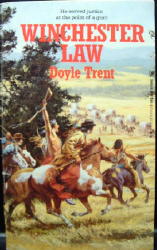BOUCHER ON WOOLRICH:
WHEN TITANS TOUCHED
by Francis M. Nevins
They died just a few months apart, forty years ago this year, and each is still considered the gold standard in his domain, Anthony Boucher in commentary on mystery fiction, Cornell Woolrich in nightmarish suspense. What did Boucher make of Woolrich and his work? I hope to address that question here.
PART I. THE NOVELS.

Boucher’s first detective novel, The Case of the Seven of Calvary, came out in 1937; his last two, The Case of the Seven Sneezes and Rocket to the Morgue (as by H.H. Holmes), in 1942. Late in October of that year he took over as mystery critic of the San Francisco Chronicle from Edward Dermot Doyle, who had joined the military after Pearl Harbor.
By then Woolrich had published well over a hundred crime-suspense stories in the leading pulp magazines plus his first four suspense novels: The Bride Wore Black (1940), The Black Curtain (1941), Black Alibi (1942), and Phantom Lady (1942, as by William Irish).
Boucher was clearly familiar with Woolrich’s work before he reviewed The Black Angel, of which he said: “Even Mr. Woolrich has never written a tenser, more jolting novel….” (21 February 1943). Ten months later he described the book as a classic of the ‘school of pure terror’ and listed it among the year’s best crime novels (26 December 1943).

Reviewing Deadline at Dawn, the second novel to appear under the William Irish byline, Boucher called it Woolrich’s “most contrived and least believable story yet, and still magically exciting almost against one’s judgment.” (5 March 1944).
That summer he was equally ambivalent about Woolrich’s The Black Path of Fear, much of which is set in Havana. “The consciously colorful atmosphere robs this of some of the impact Woolrich can get from drab American cities, but it’s nonetheless exciting.” He was bothered however by what he called the novel’s “frank glorification of revenge-killing.” (18 June 1944)
Woolrich published two more novels during Boucher’s years on the Chronicle. For some unknown reason he didn’t review Night Has a Thousand Eyes (1945, as by George Hopley). He did write up Waltz into Darkness (1947, as by William Irish) but I couldn’t establish that his review was ever published and therefore left it out of The Anthony Boucher Chronicles, my collection of his journalism for that paper.
The carbon copy survives and is among his papers preserved at Indiana University’s Lilly Library. Waltz has never been one of my favorite Woolrich novels and I gather it wasn’t one of Boucher’s either. He described its protagonist Louis Durand as an “ordinarily decent man who, sexually obsessed by an unprincipled woman, sinks ever deeper into crime and destruction” but contended that Woolrich gave this theme a rather “conventional treatment, romantically betrapped and ‘redeemed’ by a sentimental conclusion.”

On the other hand, he said, Woolrich’s “familiar skill is highly in evidence here – he can still make suspense all but unbearable, and invest the everyday with sinister terror. You won’t soon forget the scene of the real estate agent showing a prospect over the house – with the grave not yet tamped down.”
In the last analysis however he wrote off Waltz into Darkness as “a Class A production in glorious Technicolor with a glamorous cast – as it will doubtless (and deservedly) become.” In fact Waltz was one of only three Woolrich novels of the Forties not to be adapted into a movie – in any event not until shortly after both Boucher and Woolrich died, when it became the basis of Francois Truffaut’s intriguing if not terribly Woolrichian La Sirene De Mississippi (1968), with exactly the kind of glamorous stars Boucher had predicted (Jean-Paul Belmondo and Catherine Deneuve) in the leading roles.
Woolrich’s last major novels, I Married a Dead Man (as by William Irish) and Rendezvous in Black, were published in 1948. By then Edward Dermot Doyle had returned to civilian life and reclaimed his slot on the Chronicle. Since Boucher hadn’t yet made his connection with the New York Times, those novels were reviewed there by others.
Boucher did however mention Rendezvous in the first of his short-lived “Speaking of Crime” columns for Ellery Queen’s Mystery Magazine, calling it “pure black magic… – and if it’s a rewrite of his first book-form mystery story [The Bride Wore Black], who’s complaining?” (February 1949)
Of the first three Woolrich novels published after Boucher began writing for the Times, he ignored Savage Bride (1950), a paperback original and the only one of the trio to come out under Woolrich’s own name, while another reviewer wrote up Strangler’s Serenade (1951, as by William Irish). But Boucher had much to say about Fright (1950, as by George Hopley):

“No one could read a dozen pages … without recognizing the authentic Woolrich mastery of the terror of the everyday-gone-wrong; nor could one read all 245 pages without also recognizing the equally authentic Woolrich falsification of plot for the sake of a facile irony, with a few unexplained coincidences left over. Though this flaw constantly arises infuriatingly to prevent consideration of Woolrich as a serious novelist, there is no one mystery story writer more adept at suggesting the small uncertain terrors of life and the evil latent in drab characters. This 1915 period piece concerns a clerk goaded into murder on the morning of his wedding and forced deeper and deeper into self-destruction by his obsession to destroy the things that imperil him.” (12 February 1950)
The last genuine novel Woolrich completed and published during his lifetime was the paperback original Death Is My Dancing Partner (1959), a disaster which Boucher mercifully never mentioned. The following year saw publication of The Best of William Irish, an omnibus volume reviving the novels Phantom Lady and Deadline at Dawn and the collection After-Dinner Story.
Boucher was enthusiastic as only Boucher could be. “Although the complete ‘Best’ of Irish-Woolrich would run to at least three more volumes of this size, these will do as terrifying plunges into the vertiginous world of nightmare below the surface of everyday life.” (13 March 1960).

The last Woolrich suspense novel that Boucher discussed was the first in point of time. The 1964 paperback reissue of The Bride Wore Black (1940) begins with an introduction in which the foremost mystery critic of his time (or since) summed up the achievements of the genre’s master of suspense. “He is personally something of a recluse and a mystery. No one in the profession knows him intimately, and everyone who knows him at all takes on a slightly dazed look when his name is mentioned.”
Boucher refused on principle to summarize Bride’s plot but called it “my favorite among his book-length stories … purest essence of Woolrich, sounding like no one else in the business.”
Coming soon:
PART II: THE STORY COLLECTIONS.
PART III: LETTERS, A CARD AND A MEETING.




















